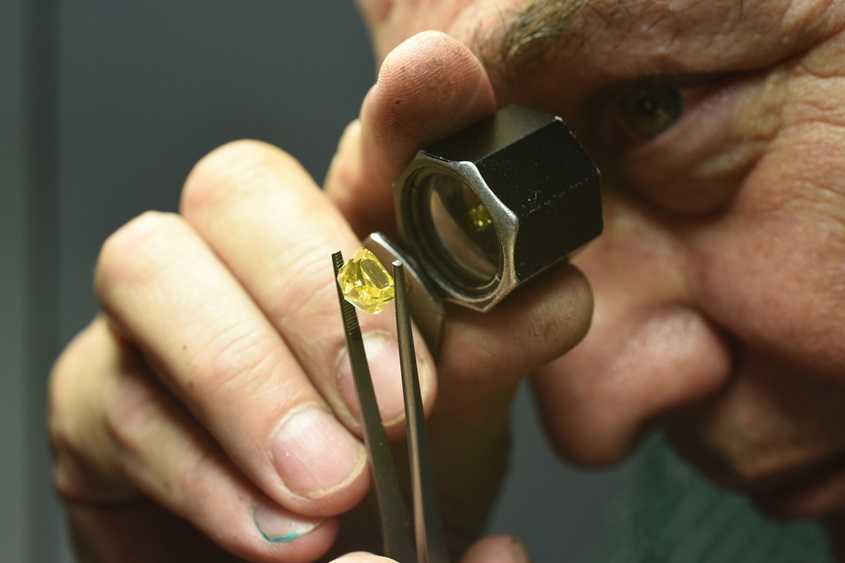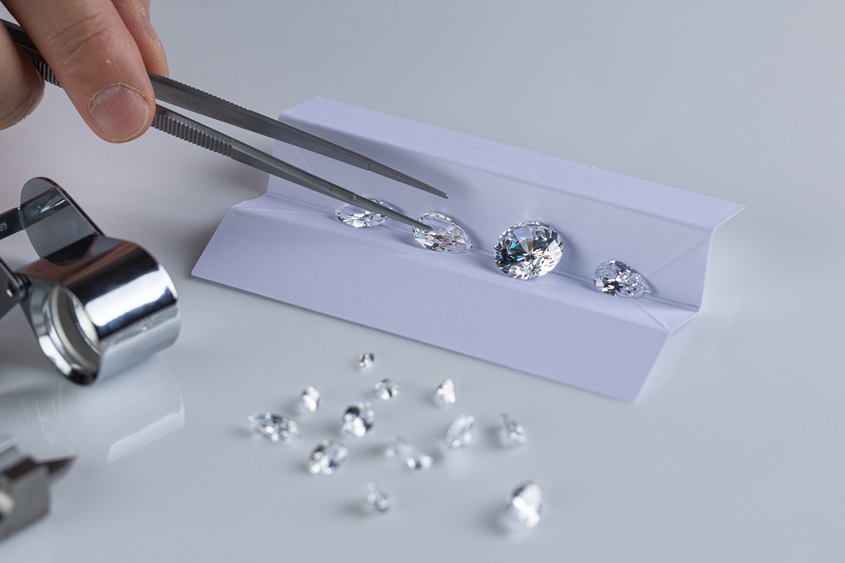Diamonds are formed over millions of years at great depths under intense pressure. Stones extracted from the earth, either by hand or by heavy equipment, are likely to contain flaws. Clarity, one of the “4Cs” used in the diamond industry to grade diamonds and set their value, is a measure of how free a given diamond is from both internal flaws, known as inclusions, and external flaws, which are called blemishes.
The most common types of inclusions are crystals (when minerals become trapped in a diamond while it is being formed), clouds (when crystals that can’t be seen by the naked eye create blurry spots), and fractures, which are referred to as “feathers.” Small feathers do not affect the structural integrity of a diamond, but larger ones can weaken a diamond in addition to affecting its grade and value.
The Gemological Institute of America (GIA) uses 10X magnification to asses a diamond’s clarity, and assigns it a clarity grade according to the following scale:
FI: Flawless, both internally and externally
IF: Internally Flawless, with slight external blemishes
VVS1, VVS2: Very, Very Slightly Included. Inclusions in the diamond are difficult to detect
VS1, VS2: Very Slightly Included. The inclusions cannot be detected easily
SI1, SI2: Slightly Included. Inclusions can be noticed by an experienced diamond grader
I1, I2, I3: Included. Easily spotted inclusions that could affect the brilliance of the polished diamond.













